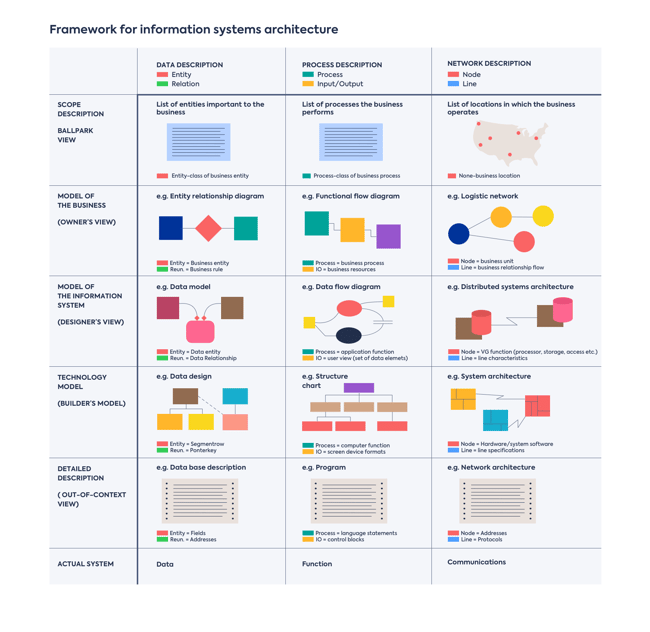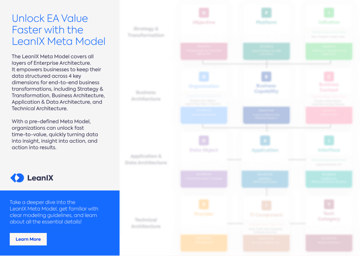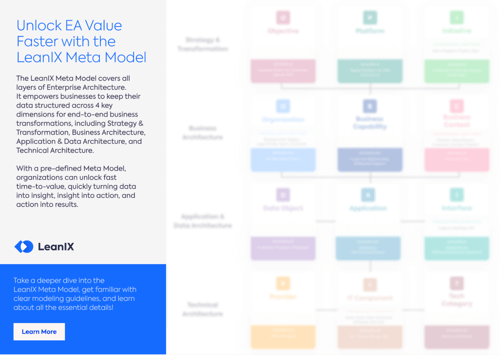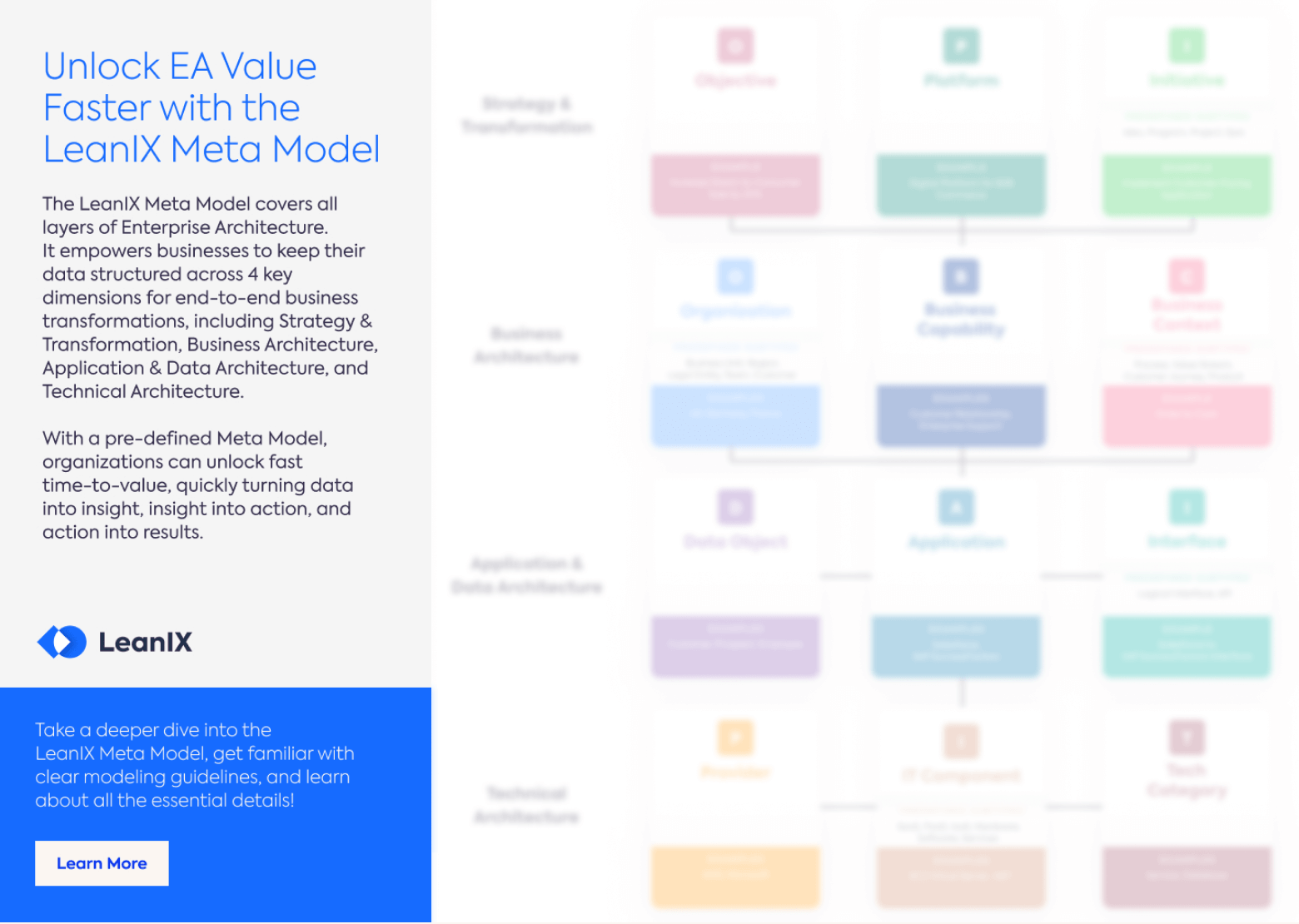Introduction
Enterprise Architecture (EA) is the discipline that defines, organizes, standardizes, and documents an organization’s structure and workflows to create and manage more efficient processes.
A specialty devoted equally to the worlds of IT and business, EA introduces practical standards across departmental units and teams in order to streamline efforts with an intelligent sharing of resources.
The evolution of Enterprise Architecture brought several frameworks architects may implement when approaching the discipline; one of which is the Zachman framework.
These frameworks describe an example taxonomy of the kinds of architectural “views” that an architect might consider developing, and provide guidelines for making the choice for developing those views.
Other EA frameworks include TOGAF, FEAF, and Gartner's Enterprise Architecture Framework.
What is the Zachman framework?
The Zachman Framework is an enterprise architecture ontology that uses a schema for organizing architectural artifacts (e.g. design documents, specifications, and models). The Zachman Framework for Enterprise Architecture aims to take into account and synergize both the artifact targets (business owners and system builders) and the particular issue that is being addressed (e.g. data and functionality).
The earliest version of this framework was introduced by John Zachman, who released “A Framework for Information Systems Architecture” in the 1980s. In 1992, Zachman proposed six descriptive areas of focus—data, function, network, people, time, and motivation—and six perspectives (also known as “players”)—planner, owner, designer, builder, subcontractor, and enterprise.
 “A Framework for Information Systems Architecture” (1987), a conceptual precursor to the “Zachman Framework”, as it appeared in Vol. 26., No. 3 of the IBM Systems Journal.
“A Framework for Information Systems Architecture” (1987), a conceptual precursor to the “Zachman Framework”, as it appeared in Vol. 26., No. 3 of the IBM Systems Journal.
This is the basis for the modern Zachman framework. This was also a watershed moment in Enterprise Architecture because it provided a completely new way of approaching the discipline.
Zachman saw that information systems were bringing about the complexity that needed to be mapped with clearer classifications and interfaces—a veritable blueprint, or “architecture,” of IT components across an enterprise. Since then there have been several updates of Zachman’s original ontology.
This framework, along with a few others, is used by Enterprise Architects when approaching strategies for the development of information systems architecture.
Ontology vs. Methodology
It is important to note that the Zachman framework is not a methodology, and therefore functions differently. In information science, ontology is a way of showing the properties of a subject area and how they are related. It is the process of defining a set of concepts and categories that represent the subject.
It is a structure whereas a methodology is a process. A structure is not a process. A structure establishes definition whereas a process provides transformation. In this way, the framework (ontology) is unpredictable and changing, producing various outcomes where nothing is repeatable. A methodology is a process of transformation from one state into another. The Zachman framework is an ontology, differentiating it from other Enterprise Architecture frameworks.
Primitives vs. Composites
An ontology is the classification of the total set of present “primitive” (elemental) components that are important to the existence of an object. A methodology, on the other hand, produces “composite” (compound) implementations of the primitives. Primitives are timeless, whereas composites are temporal. For example, a periodic table of elements is an ontology (primitive), but the chemical process of turning bleach and alkali into saltwater is a process–it uses a defined methodology with a predictable outcome (composite).
Why Zachman?
The Zachman framework provided a fresh perspective of looking at and developing enterprise architecture. It asks the questions of What, How, When, Who, Where, and Why–and the integration and answers to these questions that enable the comprehensive, composite overview of complex ideas used to plan, implement, process and evaluate an organization's enterprise structure.
Zachman intended his framework to extend to the entirety of enterprise architecture and is not just restricted to information architecture.
The Zachman framework is designed to be a proactive business tool. It can be used to model an organization's existing functions, elements, processes, and business structure.
Unlike TOGAF and other more popular frameworks which are organized around a series of life cycles or steps, Zachman’s ontological approach is mapped around the points of view taken by the various “players” in an organization, providing an effective way of assessing the completeness of software development process models, in terms of an organization's information needs.




/EN/Reports/IT%20Sustainability%20Report-Thumbnail-780x546-EN.png?width=260&height=171&name=IT%20Sustainability%20Report-Thumbnail-780x546-EN.png)
/EN/White-Paper/Insight_Communication_Engagement_How_EA_Supports_Change_Management_EN-thumbnail.png?width=260&height=171&name=Insight_Communication_Engagement_How_EA_Supports_Change_Management_EN-thumbnail.png)
/EN/White-Paper/5-critical-steps-to-change-management-in-erp-transformation-thumbnail.png?width=260&height=171&name=5-critical-steps-to-change-management-in-erp-transformation-thumbnail.png)


/EN/Reports/Thumbnail_MQ2021%20(1).jpg?width=430&name=Thumbnail_MQ2021%20(1).jpg)
